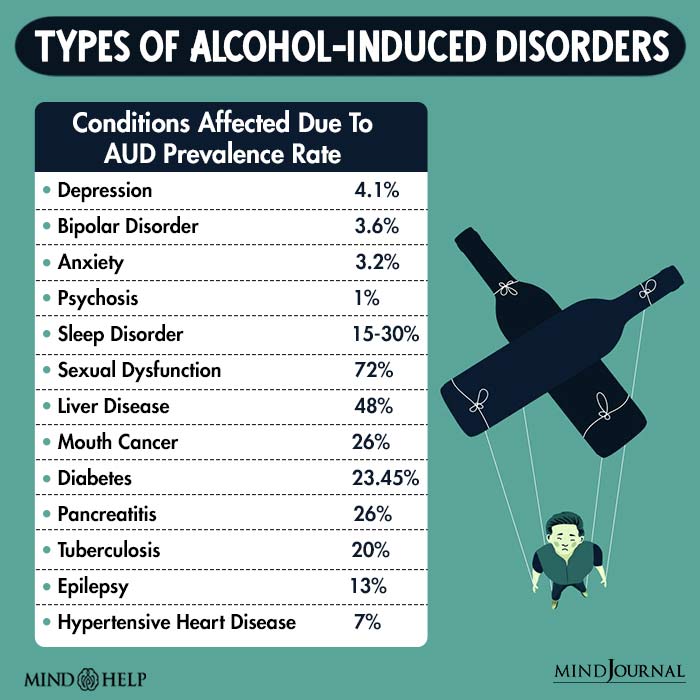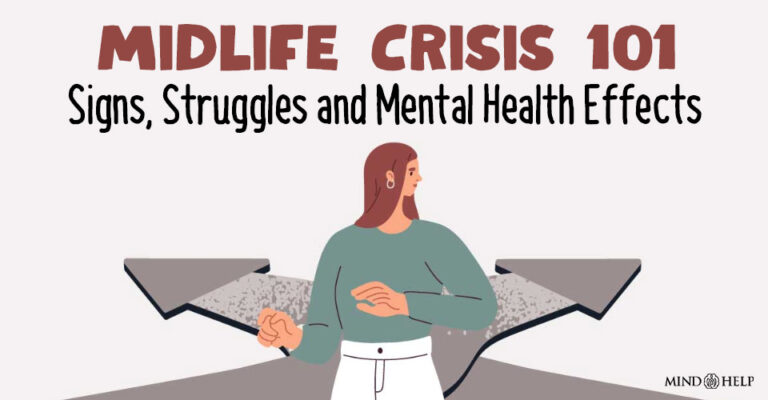Alcohol use disorder (AUD) is a chronic medical condition characterized by a problematic pattern of alcohol consumption that can have significant negative impacts on a person’s health, social life, and relationships. AUD affects millions of people worldwide and is a leading cause of disability and premature death.
What Is Alcohol Use Disorder?
Alcohol use disorder, like many other substance use disorders, is a chronic and sometimes 1 Nehring, S. M., & Freeman, A. M. (2020). Alcohol Use Disorder. PubMed; StatPearls Publishing. Available from: https://www.ncbi.nlm.nih.gov/books/NBK436003/ relapsing illness that stems from changes in the brain. Consequently, individuals afflicted with this disorder are susceptible to relapse, even after prolonged periods of abstaining from alcohol.
Alcohol use disorder ranges from mild to severe and can be challenging to manage without proper intervention. It is a disease that affects people of all ages, genders, races, and socioeconomic backgrounds.
Additionally, prolonged and severe alcohol use disorder can result in various alcohol-induced disorders, such as alcohol-induced sleep disorder, alcohol-induced sexual dysfunction, and alcohol-induced liver disease. It is important to note that alcohol is responsible 2 Bellos, S., Petrikis, P., Malliori, M., Mavreas, V., & Skapinakis, P. (2020). Prevalence of Alcohol Use Disorders and Their Association with Sociodemographic Determinants and Depression/Anxiety Disorders in a Representative Sample of the Greek General Population. Psychiatry journal, 2020, 4841050. https://doi.org/10.1155/2020/4841050 for 5.1% of the global burden of disease and injury.

Symptoms Of Alcohol Use Disorder
If someone has experienced at least two 3 Takahashi, T., Lapham, G., Chavez, L. J., Lee, A. K., Williams, E. C., Richards, J. E., Greenberg, D., Rubinsky, A., Berger, D., Hawkins, E. J., Merrill, J. O., & Bradley, K. A. (2017). Comparison of DSM-IV and DSM-5 criteria for alcohol use disorders in VA primary care patients with frequent heavy drinking enrolled in a trial. Addiction science & clinical practice, 12(1), 17. https://doi.org/10.1186/s13722-017-0082-0 of the following in the last year, he or she may have mild AUD:
- Drinking more alcohol or for a longer time than intended.
- Difficulty cutting down or controlling alcohol use.
- Spending a lot of time drinking or recovering from its effects.
- Craving or a strong desire to drink.
- Continuing to drink despite negative consequences, such as health problems or relationship issues.
- Giving up important activities to drink or recover from its effects.
- Drinking even when it is physically dangerous, such as driving under the influence.
- Developing a tolerance to alcohol means that more alcohol is needed to achieve the same effect.
- Experiencing withdrawal symptoms when not drinking or when trying to quit.
- Neglecting responsibilities due to drinking.
- Engaging in risky behaviors while or after drinking.
Causes Of Alcohol Use Disorder
The alcohol use disorder causes are complex and multifaceted, involving a combination of the following risk factors 4 Yang, P., Tao, R., He, C., Liu, S., Wang, Y., & Zhang, X. (2018). The Risk Factors of the Alcohol Use Disorders-Through Review of Its Comorbidities. Frontiers in neuroscience, 12, 303. https://doi.org/10.3389/fnins.2018.00303 such as:
- A family history of alcoholism can increase the risk of developing AUD.
- Growing up in an environment where alcohol use is normalized or encouraged can increase the risk of developing AUD.
- Experiencing high levels of stress can increase the risk of using alcohol as a coping mechanism.
- Pressure from friends or social circles to drink can increase the risk of developing AUD.
- Easy access to alcohol can increase the risk of developing AUD, particularly in those with a genetic or environmental predisposition.
Specific mental health factors 5 Rehm J. (2011). The risks associated with alcohol use and alcoholism. Alcohol research & health : the journal of the National Institute on Alcohol Abuse and Alcoholism, 34(2), 135–143. that can lead to alcohol use disorder. Here are some examples:
- People with anxiety may use alcohol as a way to avoid or escape their anxiety triggers. For example, someone with social anxiety may drink before a social event to reduce their anxiety.
- People with depression may use alcohol as a way to cope with their negative emotions or to feel better temporarily.
- People with PTSD may use alcohol to numb their emotional pain or to cope with trauma-related symptoms such as nightmares or flashbacks.
- People with ADHD may use alcohol to self-medicate and alleviate symptoms such as impulsivity, restlessness, and hyperactivity.
Mental Health Impact Of Alcohol Use Disorder
Alcohol use disorder (AUD) can have a significant impact 6 Castillo-Carniglia, A., Keyes, K. M., Hasin, D. S., & Cerdá, M. (2019). Psychiatric comorbidities in alcohol use disorder. The lancet. Psychiatry, 6(12), 1068–1080. https://doi.org/10.1016/S2215-0366(19)30222-6 on mental health, increasing the risk of developing a range of mental health disorders, including:
1. Depression
AUD can lead to changes in brain chemistry that can contribute to the development of depression, a mood disorder characterized by feelings of sadness 7 McHugh, R. K., & Weiss, R. D. (2019). Alcohol Use Disorder and Depressive Disorders. Alcohol research : current reviews, 40(1), arcr.v40.1.01. https://doi.org/10.35946/arcr.v40.1.01 , hopelessness, and loss of interest in activities.
Read More About Depression Here
2. Anxiety
Excessive alcohol consumption can trigger or exacerbate 8 Anker, J. J., & Kushner, M. G. (2019). Co-Occurring Alcohol Use Disorder and Anxiety: Bridging Psychiatric, Psychological, and Neurobiological Perspectives. Alcohol research : current reviews, 40(1), arcr.v40.1.03. https://doi.org/10.35946/arcr.v40.1.03 anxiety, a condition characterized by excessive worry and fear.
Read More About Anxiety Here
3. Bipolar Disorder
AUD can increase the risk of developing 9 Farren, C. K., Hill, K. P., & Weiss, R. D. (2012). Bipolar disorder and alcohol use disorder: a review. Current psychiatry reports, 14(6), 659–666. https://doi.org/10.1007/s11920-012-0320-9 bipolar disorder, a mood disorder characterized by episodes of depression and mania.
Read More About Bipolar Disorder Here
4. Schizophrenia
Excessive alcohol consumption can increase the risk of developing schizophrenia 10 Archibald, L., Brunette, M. F., Wallin, D. J., & Green, A. I. (2019). Alcohol Use Disorder and Schizophrenia or Schizoaffective Disorder. Alcohol research : current reviews, 40(1), arcr.v40.1.06. https://doi.org/10.35946/arcr.v40.1.06 , a severe mental health disorder characterized by disordered thinking, hallucinations, and delusions.
Read More About Schizophrenia Here
5. Sleep
Alcohol use disorder effect disrupted sleep 11 He, S., Hasler, B. P., & Chakravorty, S. (2019). Alcohol and sleep-related problems. Current opinion in psychology, 30, 117–122. https://doi.org/10.1016/j.copsyc.2019.03.007 patterns, including difficulty falling asleep, waking up frequently during the night, and waking up feeling unrefreshed in the morning.
This disorder can have a significant impact on an individual’s physical and mental health, leading to daytime fatigue, decreased productivity, and an increased risk of accidents or injuries.
Alcohol use disorder (AUD) can have a significant impact 12 AshaRani, P. V., Karuvetil, M. Z., Brian, T. Y. W., Satghare, P., Roystonn, K., Peizhi, W., Cetty, L., Zainuldin, N. A., & Subramaniam, M. (2022). Prevalence and Correlates of Physical Comorbidities in Alcohol Use Disorder (AUD): a Pilot Study in Treatment-Seeking Population. International journal of mental health and addiction, 1–18. Advance online publication. https://doi.org/10.1007/s11469-021-00734-5 on physical health, increasing the risk of a range of medical conditions, including:
1. Liver Disease
Excessive alcohol consumption can cause a variety of liver diseases, including fatty liver, alcoholic hepatitis, and cirrhosis.
2. Cardiovascular Disease
AUD can increase the risk of high blood pressure, irregular heartbeat, stroke, and other cardiovascular problems.
3. Gastrointestinal Problems
AUD can cause inflammation and bleeding in the digestive system, leading to stomach ulcers, internal bleeding, and other gastrointestinal problems.
4. Neurological Disorders
Chronic alcohol consumption can lead to various neurological problems, including Wernicke-Korsakoff syndrome 13 Shweta Akhouri, & Newton, E. J. (2019, March 15). Wernicke-Korsakoff Syndrome. Nih.gov; StatPearls Publishing. Available from: https://www.ncbi.nlm.nih.gov/books/NBK430729/ , a disorder characterized by confusion, memory loss, and other cognitive issues.
5. Cancer
AUD can increase the risk of developing certain types of cancer, including liver, breast, and colon cancer.
6. Pancreas
Heavy drinking can also damage the pancreas, causing pancreatitis, a painful and potentially life-threatening condition.
7. Sexual Dysfunction
Alcohol use disorder (AUD) can contribute to sexual dysfunction 14 Rohilla, J., Dhanda, G., Meena, P. S., Jilowa, C. S., Tak, P., & Jain, M. (2020). Sexual dysfunction in alcohol-dependent men and its correlation with marital satisfaction in spouses: A hospital-based cross-sectional study. Industrial psychiatry journal, 29(1), 82–87. https://doi.org/10.4103/ipj.ipj_5_20 by causing erectile dysfunction and infertility in the long term.
Alcohol Use Disorder Diagnosis
Diagnosis of Alcohol use disorder involves evaluating an individual’s alcohol consumption patterns and identifying the steps involved in AUD:
1. Initial Screening
In this phase, a healthcare professional would ask individuals about their alcohol use and related problems to determine if they are at risk for AUD. This may involve using a brief questionnaire or assessment tool 15 Martin, C. S., & Winters, K. C. (1998). Diagnosis and assessment of alcohol use disorders among adolescents. Alcohol health and research world, 22(2), 95–105. such as the alcohol use disorders identification test.
2. Comprehensive Evaluation
If the initial screening indicates a risk for AUD, the healthcare professional would go for conducting a more comprehensive evaluation. This may involve a detailed interview to gather information about the individual’s alcohol use and the probability of associated physical, social, or psychological problems.
The healthcare professional may also perform a physical exam 16 Allen, J. P., & Litten, R. Z. (2001). The role of laboratory tests in alcoholism treatment. Journal of substance abuse treatment, 20(1), 81–85. https://doi.org/10.1016/s0740-5472(00)00144-6 such as a blood test to assess the probability of medical complications related to alcohol use.
3. Diagnostic Criteria for Alcohol Use Disorder
The diagnostic criteria are outlined in the Diagnostic and Statistical Manual of Mental Disorders, Fifth Edition (DSM-5) to determine if the individual meets the diagnostic criteria 17 Takahashi, T., Lapham, G., Chavez, L. J., Lee, A. K., Williams, E. C., Richards, J. E., Greenberg, D., Rubinsky, A., Berger, D., Hawkins, E. J., Merrill, J. O., & Bradley, K. A. (2017). Comparison of DSM-IV and DSM-5 criteria for alcohol use disorders in VA primary care patients with frequent heavy drinking enrolled in a trial. Addiction science & clinical practice, 12(1), 17. https://doi.org/10.1186/s13722-017-0082-0 for AUD. The DSM-5 criteria include symptoms, and to be diagnosed with AUD, an individual must have at least two of these symptoms within a 12-month period.
4. Severity
A healthcare professional would also determine the severity 18 Boness, C. L., Lane, S. P., & Sher, K. J. (2019). Not all alcohol use disorder criteria are equally severe: Toward severity grading of individual criteria in college drinkers. Psychology of addictive behaviors : journal of the Society of Psychologists in Addictive Behaviors, 33(1), 35–49. https://doi.org/10.1037/adb0000443 of the AUD, such as- mild, moderate, or severe, depending on the number of symptoms present together.
5. Differential Diagnosis
The healthcare professional would also consider other potential causes of the individual’s symptoms and behaviors, such as other forms of substance use 19 Alozai, U. ullah, & Sharma, S. (2020). Drug and Alcohol Use. PubMed; StatPearls Publishing. Available from: https://www.ncbi.nlm.nih.gov/books/NBK513263/ disorders or medical conditions, to ensure an accurate diagnosis.
Treatment For Alcohol Use Disorder
Treatment of Alcohol Use Disorder (AUD) typically involves a combination of interventions and approaches, depending on the individual’s specific needs. The goal of treatment 20 Witkiewitz, K., Litten, R. Z., & Leggio, L. (2019). Advances in the science and treatment of alcohol use disorder. Science advances, 5(9), eaax4043. https://doi.org/10.1126/sciadv.aax4043 is to help individuals achieve and maintain sobriety, improve their physical and mental health conditions, and prevent relapse. Some common treatments form of AUD are:
1. Medication and Hospitalization
Medications can be used to help manage withdrawal symptoms and reduce alcohol cravings. Examples of medications used 21 Kranzler, H. R., & Soyka, M. (2018). Diagnosis and Pharmacotherapy of Alcohol Use Disorder: A Review. JAMA, 320(8), 815–824. https://doi.org/10.1001/jama.2018.11406 to treat AUD include benzodiazepines, naltrexone, acamprosate, and disulfiram.
In addition, hospitalization can be an effective treatment option for individuals with chronic alcohol-related disorders. This treatment plan may involve medically supervised detoxification and medication management to alleviate withdrawal symptoms and support the individual’s overall recovery.
2. Behavioral Therapy
Behavioral therapy is a key component of AUD treatment. It involves working with a therapist or counselor to identify and change patterns 22 McHugh, R. K., Hearon, B. A., & Otto, M. W. (2010). Cognitive behavioral therapy for substance use disorders. The Psychiatric clinics of North America, 33(3), 511–525. https://doi.org/10.1016/j.psc.2010.04.012 of behavior and thought processes that may be contributing to alcohol use. Examples of behavioral therapies used to treat AUD include cognitive-behavioral therapy (CBT), motivational interviewing, and contingency management.
3. Family Therapy
Family therapy can help individuals with AUD and their family members 23 Suresh Kumar, P. N., & Thomas, B. (2007). Family intervention therapy in alcohol dependence syndrome: One-year follow-up study. Indian journal of psychiatry, 49(3), 200–204. https://doi.org/10.4103/0019-5545.37322 understand and address the impact of alcohol use on the family. Family therapy can also provide support and education for family members, as well as help improve communication and problem-solving skills.
How To Cope With Alcohol Use Disorder
Coping with alcohol use disorder (AUD) can be a difficult and challenging process, but there are several strategies that can be effective in managing this 24 Carter, J., Sharon, E., & Stern, T. A. (2014). The management of alcohol use disorders: the impact of pharmacologic, affective, behavioral, and cognitive approaches. The primary care companion for CNS disorders, 16(4), 10.4088/PCC.14f01683. https://doi.org/10.4088/PCC.14f01683 condition:
- Join a support group, such as Alcoholics Anonymous 25 Wnuk M. (2022). The Beneficial Role of Involvement in Alcoholics Anonymous for Existential and Subjective Well-Being of Alcohol-Dependent Individuals? The Model Verification. International journal of environmental research and public health, 19(9), 5173. https://doi.org/10.3390/ijerph19095173 , to find a supportive community.
- Practice self-care with exercise, healthy eating, and mindfulness techniques.
- Find alternative activities to alcohol consumption, such as hobbies or social events.
- Build a support network of friends and family members who understand and support recovery efforts.
- Avoid high-risk situations that may trigger alcohol use.
- Set realistic goals for recovery and track progress to stay motivated.
Takeaway
Alcohol use disorder (AUD) is a serious condition characterized by problematic patterns of alcohol consumption that can lead to significant harm or distress. Symptoms of AUD may include intense cravings, tolerance, withdrawal, and persistent alcohol use despite the negative consequences of other related disorders induced by heavy drinking. Seeking professional help is essential for the proper diagnosis and treatment of AUD.
At A Glance
- Alcohol use disorder (AUD) is a serious condition that involves problematic patterns of alcohol consumption.
- Alcohol use disorder symptoms may include intense cravings, tolerance, withdrawal, and persistent alcohol use despite negative consequences.
- Alcohol use disorder can lead to various physical, psychological, and social problems.
- The diagnosis of AUD typically involves evaluating an individual’s history of alcohol use and related symptoms using the criteria outlined in the DSM-5.
- Several therapies such as behavioral therapy or family therapy can be used to prevent the related symptoms of alcohol use disorder.
- Seeking professional help is crucial for the proper diagnosis and treatment of AUD.
Frequently Asked Questions (FAQs)
1. What is the difference between alcohol use disorder and alcoholism?
Alcohol use disorder vs alcoholism are often used interchangeably, but technically, alcohol use disorder is the official diagnosis in the Diagnostic and Statistical Manual of Mental Disorders (DSM-5), while alcoholism is a colloquial term that can encompass various degrees of alcohol misuse.
2. What are the long-term effects of alcohol use disorder?
Long-term effects of alcohol use disorder can include liver disease, cardiovascular disease, neurological damage, and increased risk of certain types of cancer. Additionally, alcohol use disorder can have negative effects on mental health, relationships, employment, and overall quality of life.















